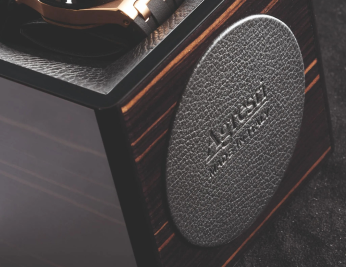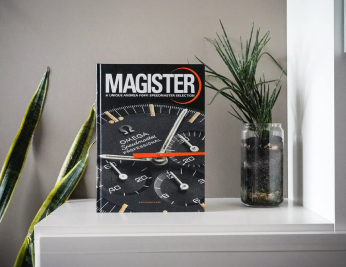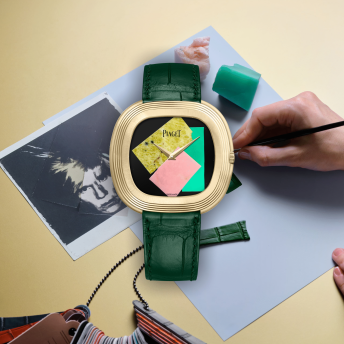In the heart of Saxony, amid silent valleys of the Ore Mountains, the small town of Glashütte holds one of the highest expressions of European watchmaking. Here, for more than a century and a half, timekeeping has become a technical language and a cultural heritage.

The small town of Glashütte
Among the names that have marked its history, Glashütte Original occupies a central role: a brand that has been able to combine engineering rigor, historical continuity, and capacity for innovation while remaining true to the essence of Saxon tradition.
The Origins: the construction of a method (1845-1878)
In 1845 Ferdinand Adolph Lange founded the first watch manufactory in Glashütte. His project aims not simply to produce watches, but to create an industrial ecosystem based on training and self-sufficiency. Independent workshops dedicated to the manufacture of specific components sprang up around his reality, giving rise to a district that quickly became synonymous with pure excellence.

The Glashütte laboratory at the turn of the century
It was during these years that all the technical codes that would define the “Glashütte school” took shape : three-quarter plate, balance wheel with compensating screws, swan-neck precision adjustment, “ribbon” and “sunray” decorations, gold bezels fixed by screws, and gilded escapement wheels. Each choice meets a concrete mechanical requirement: stability, durability, efficiency. Nothing is left to chance.
The founding in 1878 of the German School of Watchmaking marks the district’s maturity. The institute codified procedures, tools and measurements, training generations of craftsmen who would keep the reputation of the Glashütte name intact in the following decades.


Right: The “German School of Watchmaking,” 1880, Glashütte.
Continuity during the DDR: the GUB season (1951-1985)
After World War II, Saxony became part of the East German sphere. The factories (UROFA – Uhren Rohwerke Fabrik AG and UFAG – Uhrenfabrik AG Glashütte) were merged in 1951 into VEB Glashütter Uhrenbetriebe (GUB), a state structure charged with preserving and rationalizing production.


The hand engraving “UROFA 61 – Wiederaufbau 1. Series” (UROFA 61 – 1st series of the Reformation)
The political environment and limited resources test the people’s tenacity and steadfastness, but the technical tradition does not cease: GUB retains local mechanical skills and develops a production of sturdy, reliable and technically consistent gauges.

Thus were born watches such as the Spezimatic (1965-1979) and the Spezichron (1979-1985), symbols of an era when the socialist industry attempted to maintain high standards despite a planned economy. They are essential, pragmatic timepieces built with rigor and precision. Behind the understated aesthetics lies a desire not to dissipate knowledge accumulated over a century of experience.


All configurations of the Spezimatic (with variants also in 18K gold cases)
The rebirth of a manufacture (1994-2000)
With German reunification, GUB was privatized and in 1994 Glashütte Original was officially born. The company inherits archives, machinery and, most importantly, expertise. The goal is clear: to restore German watchmaking to its place alongside Swiss excellence.
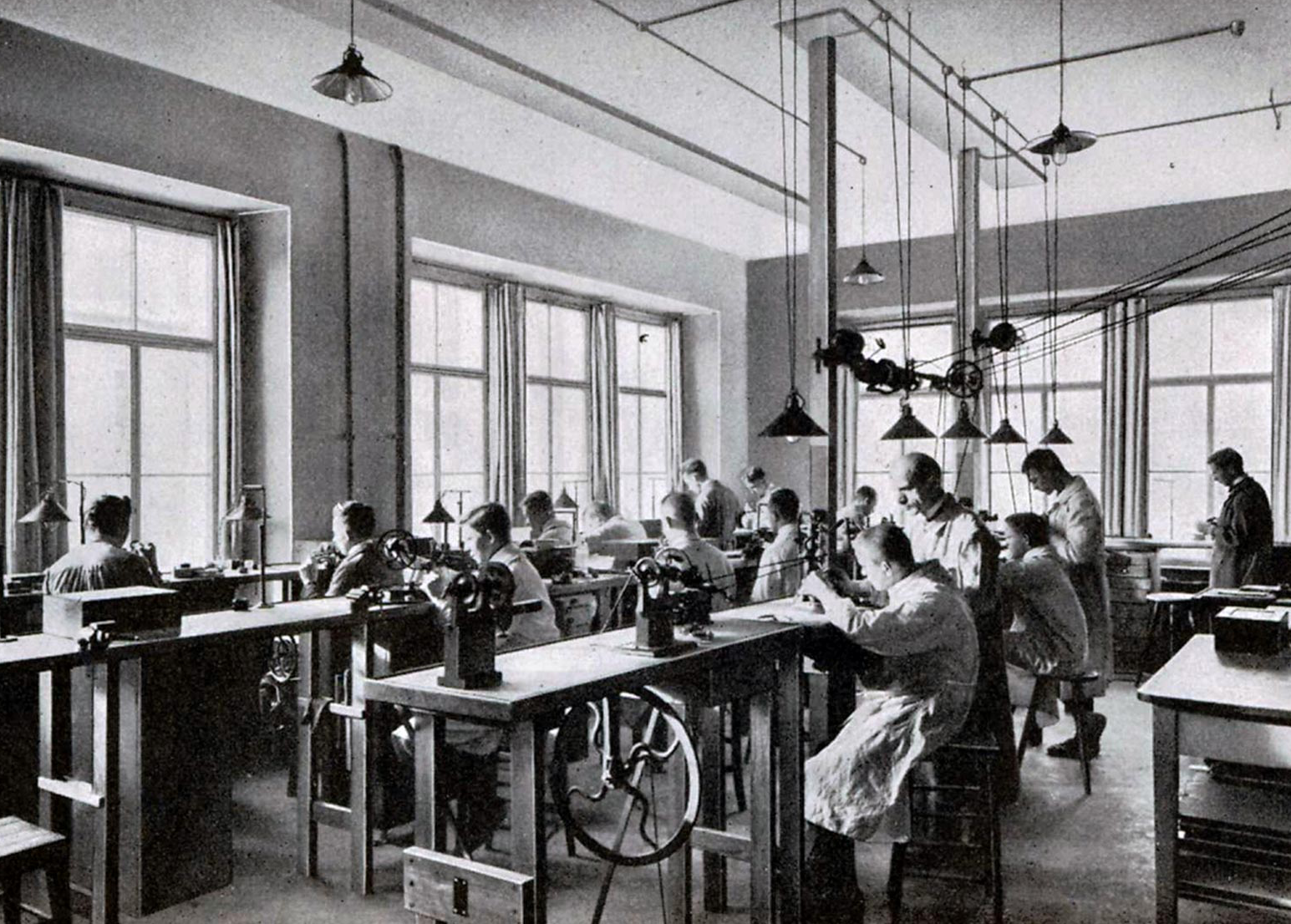
The Glashütte workshop with the guidance of Alfred Helwig
In 1995, the house introduced the first flying wrist tourbillon of modern times, a tribute to the invention of Alfred Helwig, a key figure of the Saxon school. The year marks the return of mechanical complexity as an expression of artistry.

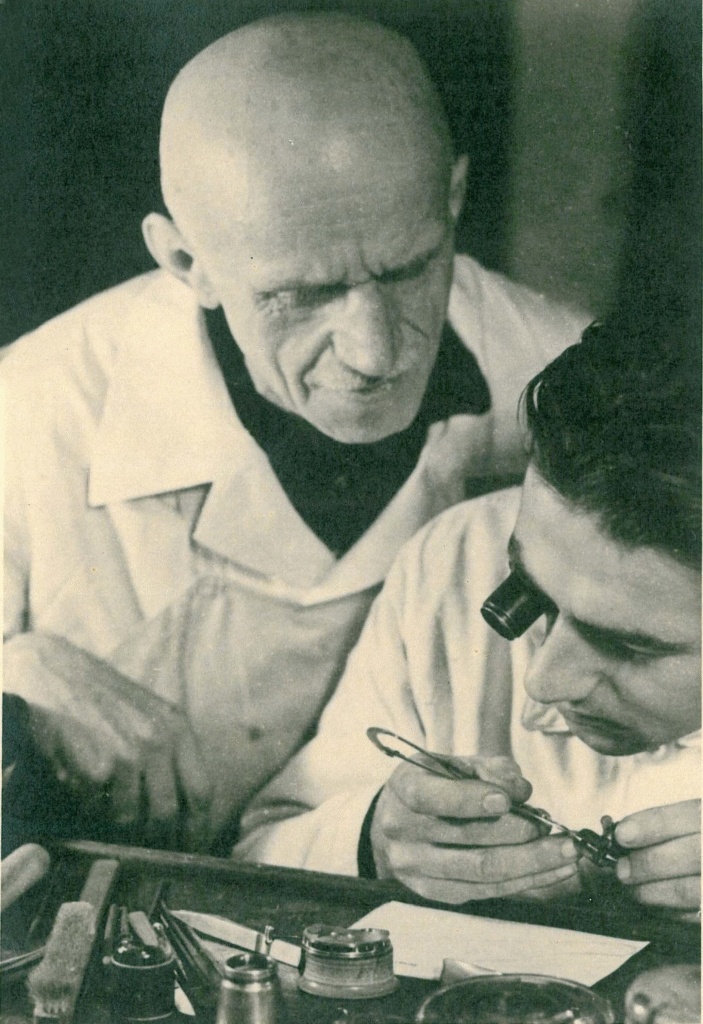
Alfred Helwig and his students intent on developing the most elaborate complication ever expressed in the art of watchmaking: the tourbillon
In 1997 came the Senator Panorama date Moon Phase, the first model to introduce the large panoramic date (Panorama date), now a hallmark of the brand. This complication, with two coaxial discs on different levels, testifies to Glashütte Original’s focus on legibility and formal synthesis.
In 2000, however, the acquisition by the Swatch Group secured new resources and a solid industrial infrastructure, without affecting the technical independence of the manufacture.
The spirit of innovation: from the Pano collection to calibers 37 (2001-2015)
The new millennium opened with the presentation of the PanoRetroGraph (2001), followed by the PanoGraph (2002). These models inaugurate the Pano collection, characterized by an asymmetrical dial and internally developed complications. The design reflects the logic of the construction: each indication is placed according to the geometry of the underlying movement, in a balance between functionality and visual harmony.
At the same time, the Alfred Helwig School of Watchmaking was established, training young masters and ensuring continuity of the craft tradition.
2014 saw the debut of the Senator Chronograph Panorama Date with the new caliber 37-01, a column-wheel flyback chronograph with a 70-hour power reserve. Entirely designed and produced in-house, it represents the manufacture’s ability to develop complex mechanics according to criteria of engineering rationality.

The Senator Chronograph Panorama Date
The following year the caliber 37-02 enriched the Seventies collection, reinterpreting the sporty design of the 1970s in a modern key. In parallel, the SeaQ, a DIN/ISO-certified diver inspired by the 1969 Spezimatic model, consolidates the brand’s presence in the high-end sports segment.

The SeaQ inspired by the 1969 Spezimatic
Manufacturing today: precision element of identity
Today Glashütte Original manufactures about 95 percent of its watches’ components in-house, a level of integration rare even in Swiss watchmaking. Every component, from the balance wheel to the plates, is machined, decorated and assembled on site. Surfaces feature the Côtes de Glashütte, blued screws, hand engraving and mirror polishing typical of the Saxon tradition.
This manufacturing independence allows for total control over quality and attention to detail that can be felt in every model. The result is not only technical, but aesthetic: a balance between German rigor and fine craftsmanship that defines a recognizable and consistent stylistic language.
The silent alternative to Swiss Made
Where Swiss watchmaking celebrates tradition and quiet luxury, Saxon watchmaking instead seeks harmony in constructive logic and mechanical transparency, turning precision into an aesthetic language.
In the landscape of contemporary haute horlogerie, the maison remains a rare example of continuity and authenticity: a brand that evolves with measure without ever losing its roots. Glashütte Original continues to mark time according to the principles of rigor, balance, and restraint that have made Glashütte a legendary place.
In every creation by Glashütte Original, time is not only marked: it is built, adjusted and finished with the patience of those who consider mechanics an art form.
Visit our Youtube channel to experience the best of the world of watchmaking firsthand.
For all real-time updates follow us on Instagram.

